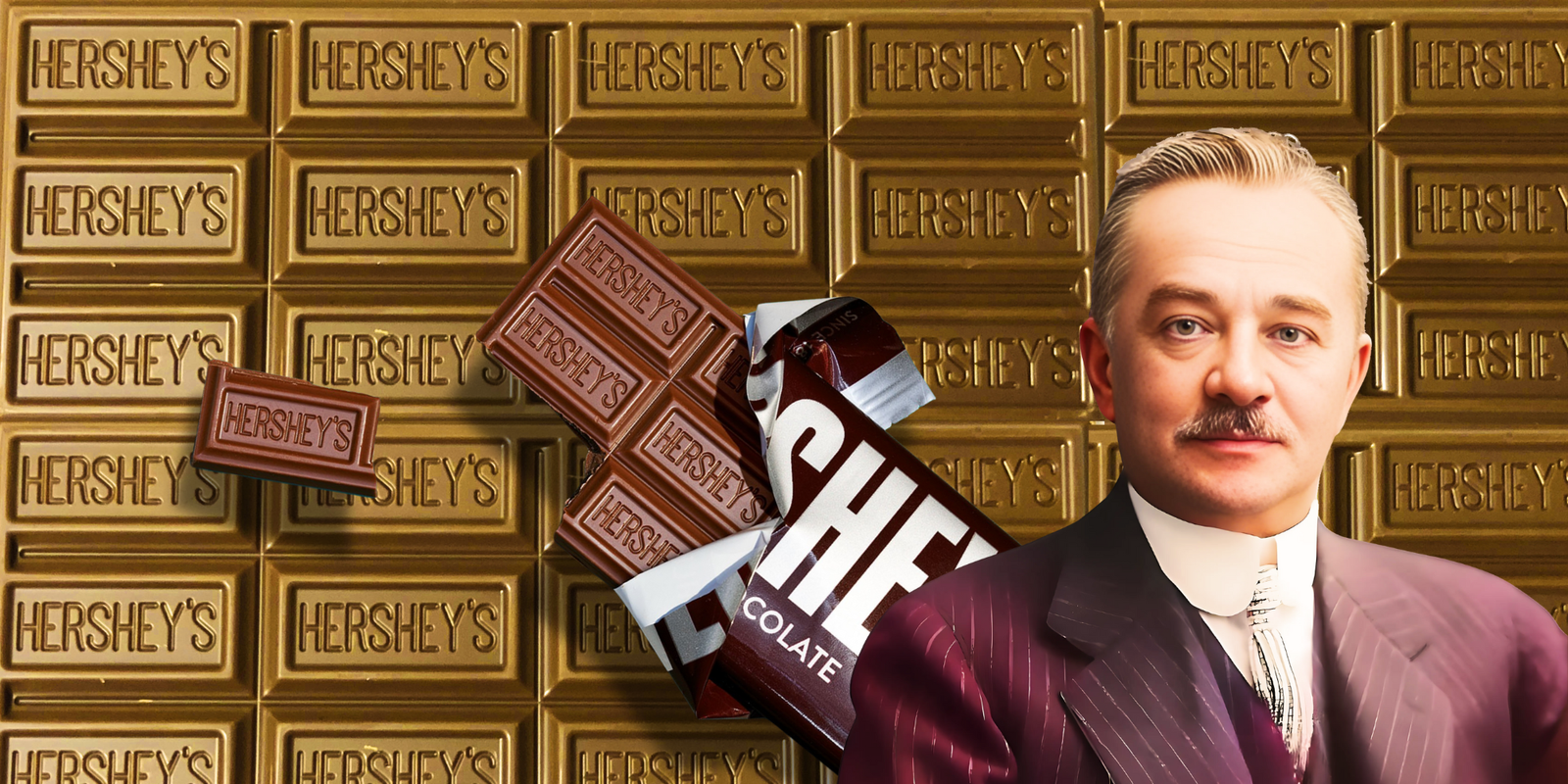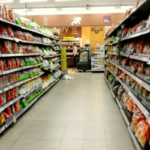[ad_1]
If ever there was a real-world Willy Wonka, Milton Hershey undoubtedly fits the bill. But unlike the fictional chocolatier who started with a factory full of fantastical contraptions, Hershey’s journey to chocolate fame was no sugar-coated dream. It was a relentless grind through hardship, failures, and moments of near-catastrophe. In this story of grit, genius, and a little cocoa-dusted luck, we’ll explore how Hershey turned his entrepreneurial failures into one of the world’s most iconic chocolate brands. Let’s unwrap this tale layer by layer.
From Rags to Riches (Almost): The Rocky Beginnings of Milton Hershey
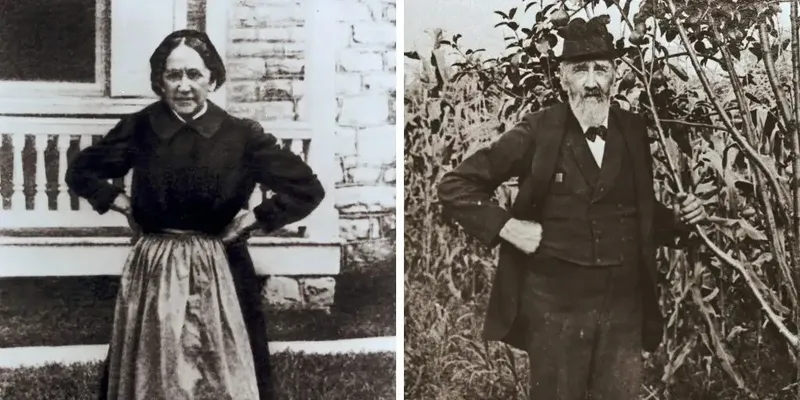
Parents of Milton Hershey – Veronica “Fanny” Snavely Hershey (On the left) & Henry Hershey (On the Right)
Born in 1857 in Derry Township, Pennsylvania, Milton grew up in a family plagued by financial instability. His father, Henry, was a dreamer prone to chasing get-rich-quick schemes, failing at 17 ventures and leaving the family penniless. By the time Milton was 4, the Hersheys were on the brink of starvation, living off the charity of relatives. Tragedy struck when his younger sister, Sarena, succumbed to scarlet fever at just 4 years old, deepening the split between Milton’s parents.
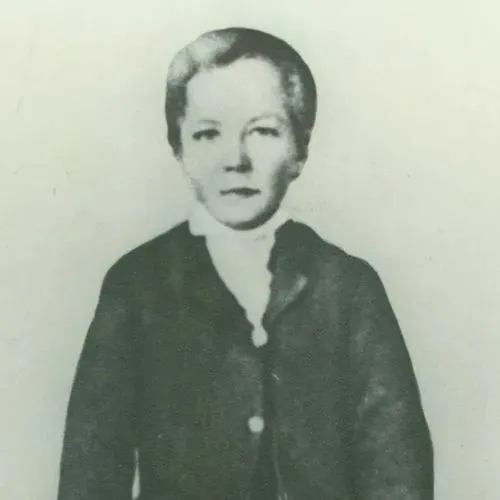
Young Milton Hershey
Milton’s chaotic upbringing disrupted his education, forcing him to drop out of school by fifth grade to help support the family. At 13, he began an apprenticeship of 5 years at a newspaper company, but the job wasn’t his passion. In a bold move, Milton sabotaged his position to escape the dreary work, much to his father’s disappointment. His mother, however, encouraged him to find a path that suited his interests.
At 18, Milton found his calling in candy-making during an apprenticeship at Royer’s Candy Shop. By 1876, armed with the skills and ambition to start his own business, he opened a small candy shop in Philadelphia with a loan from his mother’s family. Milton worked tirelessly, even sleeping under the counter, and initially benefited from the 1876 Centennial Exposition, which brought customers from across the globe. Ever resourceful, he installed an air chute to waft the aroma of candies into the streets, attracting passersby. However, despite his innovative tactics, Milton struggled to scale operations due to limited resources and rising ingredient costs. In 1881, desperate to save his business, Milton partnered with his father. But Henry’s expensive ideas, including cough drop candies and elaborate displays, drained the company’s finances. Eventually, the business collapsed, and Milton declared bankruptcy after six years of effort.
By age 24, Milton had faced significant setbacks, including financial ruin and the humiliation of failure. Yet, these experiences taught him invaluable lessons about resilience, innovation, and focus. This chapter of his life, though fraught with difficulty, laid the foundation for the grit and determination that would one day make him the real-life Willy Wonka.
Failing Forward: The Caramel That Changed Everything
After the collapse of his first candy shop in Philadelphia, Milton Hershey could have abandoned his entrepreneurial ambitions. Instead, he chose to start over, determined to learn from his failures. His journey to success as a caramel tycoon is a testament to resilience and ingenuity.
A Second Attempt in New York
Believing location was the issue, Milton moved to New York City, taking a job at Huyler’s candy store. There, he learned the secret of using fresh cream in caramel recipes, a lesson that would later define his career. Armed with this knowledge, Milton opened another candy shop, this time with his mother’s help. However, his reliance on an outdated idea—cough drop candies—proved to be his downfall. Intense competition and poor sales forced him to close his second shop. To make matters worse, he returned home to Pennsylvania deeply in debt and facing lawsuits.
The Turning Point: A New Recipe

Representation of Hershey’s Caramel
Back in Lancaster, Pennsylvania, Milton realised the region’s rich dairy supply presented an opportunity. Drawing on his time at Huyler’s, he developed a fresh cream-based caramel recipe. The new product, marketed as “melt-in-your-mouth” caramels, quickly gained popularity among locals.
However, scaling production was a challenge. Milton’s credit was ruined, and banks were hesitant to lend to him. Once again, his family came to his aid. His Aunt Mattie co-signed a $700 bank loan, putting her house up as collateral. The stakes were immense: if Milton failed to repay the loan within 90 days, his aunt would lose her home.
A Last-Minute Miracle
As the repayment deadline approached, Milton worked tirelessly, producing and selling caramels by hand. Just as all seemed lost, a wealthy English businessman visiting Lancaster tasted his caramels and placed a massive export order for shops in England. The deal saved Milton’s business and allowed him to repay the loan with just days to spare.
Scaling and Innovating
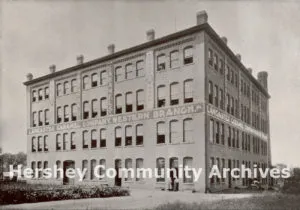
Lancaster Caramel Company
With momentum on his side, Milton founded the Lancaster Caramel Company in 1886. This time, he avoided past mistakes by focusing on quality, scalability, and strategic marketing. By selling caramels in bulk to wholesalers rather than as individual candies, he optimized operations and increased profits. Innovative marketing, such as branded packaging and highlighting the long shelf life of his caramels, helped his products stand out.
As demand grew, Milton reinvested profits into expanding the business. Within a few years, Lancaster Caramel employed hundreds of workers and operated multiple factories. His caramels gained international acclaim, with exports spreading across Europe. By his mid-30s, Milton had transformed himself from a twice-bankrupt entrepreneur into the owner of a thriving candy empire.
Chocolate for the Masses: A Sweet Gamble That Paid Off
By the late 19th century, Milton Hershey had firmly established himself as a caramel tycoon with the Lancaster Caramel Company. But Milton wasn’t content to rest on his laurels. He had seen a future beyond caramels—one centered around chocolate. This bold pivot would transform Hershey’s business and the confectionery industry forever.
The Chocolate Revelation
In 1893, Milton attended the World’s Columbian Exposition in Chicago, where he encountered a German company showcasing innovative chocolate-making equipment. At the time, chocolate was a luxury, made by hand and primarily imported from Europe, making it inaccessible to most average-earning Americans. But Milton saw an opportunity: if chocolate could be mass-produced efficiently, it could become an affordable treat for the average consumer.
Excited by this prospect, Milton purchased the German machinery on the spot and began experimenting with chocolate production back in Lancaster. He believed so strongly in the potential of chocolate that in 1900, he sold the Lancaster Caramel Company for $1 million (equivalent to nearly $35 million today). His family criticized the decision, calling it reckless, but Milton was undeterred, famously declaring, “Caramels are only a fad. Chocolate is a permanent thing.”
Mastering Mass Production
Milton’s vision wasn’t just to make chocolate—it was to make milk chocolate affordable and widely accessible. Milk chocolate at the time was considered a luxury, primarily imported from Switzerland. To achieve his goal, Milton hired a team of experts to develop a formula for milk chocolate that wouldn’t spoil quickly. After much trial and error, one of his employees, John Schmalbach, discovered a method to condense milk without burning it, creating a smooth, creamy chocolate with a long shelf life.
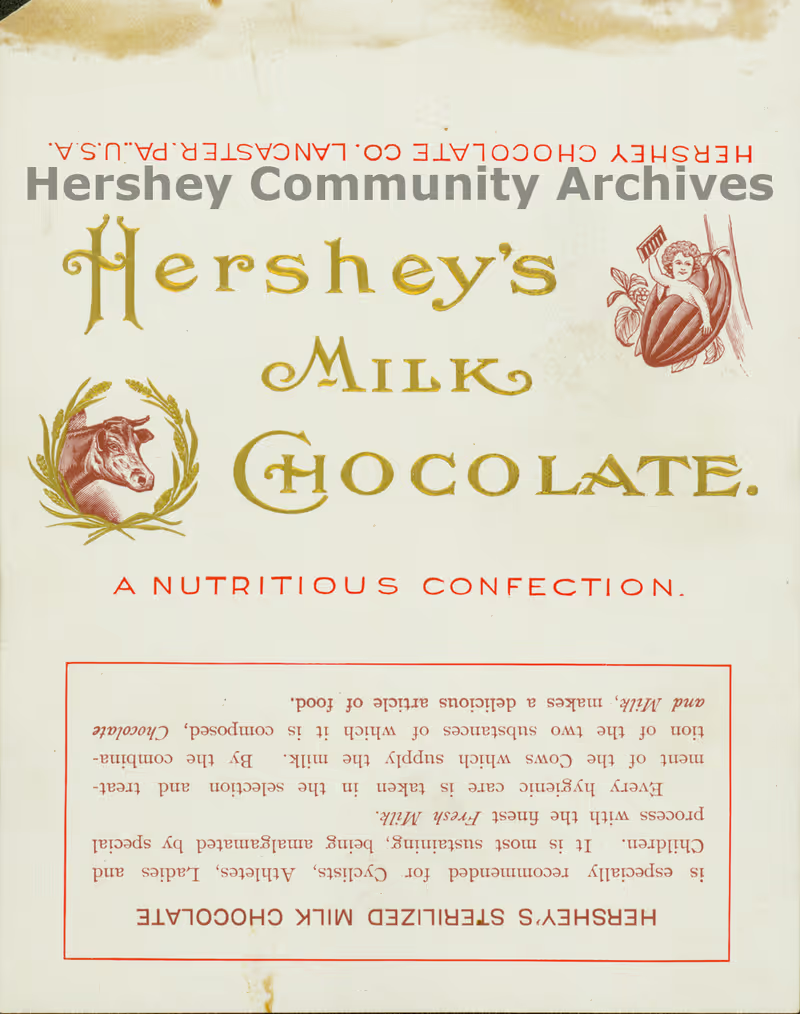
Hershey’s Milk Chocolate bar wrapper, 1900-1903
This breakthrough allowed Milton to mass-produce milk chocolate at significantly reduced costs, enabling him to sell it for just 5 cents per bar. This affordability revolutionized the chocolate market, turning luxury into a household staple.
A Strategic Focus
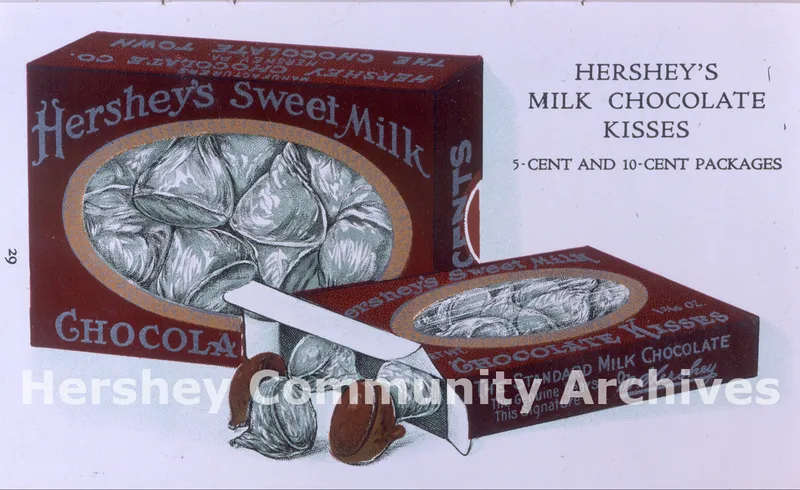
Hershey’s success also lay in his focus on simplicity. Unlike competitors who offered a wide variety of products, Milton concentrated on producing a select few items, such as Hershey’s milk chocolate bar and, later, Hershey’s Kisses. This focus on efficiency and economies of scale kept costs low and production streamlined.
By 1910, Hershey’s chocolate was not only a market leader but a symbol of affordable indulgence, cementing Milton Hershey’s place as a visionary who brought chocolate to the masses.
The Chocolate Town Dream: Building a Community, Not Just a Brand
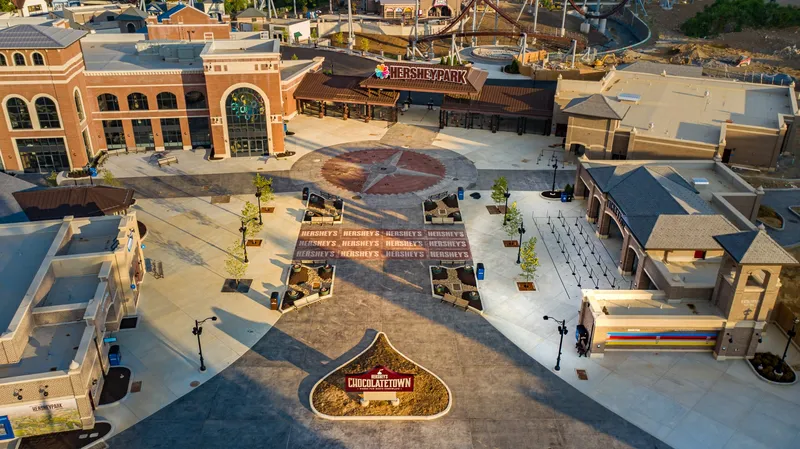
Chocolate Town, Hershey, Pennsylvania
Milton Hershey’s vision extended far beyond chocolate bars. In 1903, he began constructing a massive chocolate factory in his hometown of Derry Township, Pennsylvania. But for Milton, it wasn’t just about the factory; he wanted to create a thriving community for his employees—a place where they could live comfortably and grow alongside the business.
This vision gave birth to Hershey, Pennsylvania, a carefully planned town designed with the welfare of its workers in mind. Milton built affordable housing equipped with modern amenities like indoor plumbing and central heating, as well as schools, parks, and public transport. Over time, he added cultural and recreational facilities, including an open-air theater, golf courses, and the now-famous Hersheypark, which began as a place for employees to enjoy time with their families but grew into a major tourist attraction.
Milton believed that happy workers were productive workers, and his investment in their well-being paid off. The town itself became a powerful advertisement for the Hershey brand, drawing talent and tourists alike. By creating a model community, Milton Hershey didn’t just build a company—he built a legacy. Hershey, Pennsylvania, still thrives today as a testament to his visionary leadership.
Hershey’s Secret Recipe: Innovation, Marketing, and a Dash of Espionage
Milton Hershey’s success didn’t just come from his visionary pivot to chocolate; it was also driven by his relentless pursuit of innovation, clever marketing, and occasionally unconventional strategies. He didn’t just want to sell chocolate—he wanted Hershey’s to dominate the market.
Marketing Genius
Hershey’s marketing strategies were equally innovative. Milton understood the power of visibility. He included postcards of Hershey, Pennsylvania, with chocolate bars, sparking curiosity and drawing tourists to the town. He even paid janitors to leave Hershey’s wrappers visible in schools, subtly promoting the brand among young consumers.
Espionage for Excellence
Milton’s most audacious strategy, however, was sending trusted employees undercover to work at rival chocolate companies, particularly in Europe, to learn their methods and trade secrets. This intelligence helped Hershey refine his production techniques and stay ahead of competitors.
By 1910, Hershey’s sales had topped $2 million, and his brand had become synonymous with affordable indulgence. His blend of innovation, savvy marketing, and daring tactics laid the foundation for an enduring empire.
The Generous Giant: Giving Back, the Hershey Way
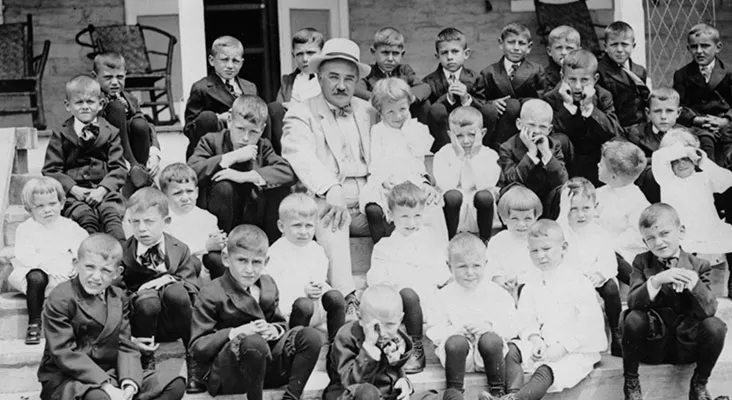
Milton Hershey surrounded by the children of Milton Hershey School he founded
Despite his immense success, Milton never forgot his humble beginnings. Unable to have children, he poured his wealth into philanthropy. The Milton Hershey School, originally for orphans, continues to provide free education and care for underprivileged children. Hershey ensured that a significant portion of his company’s profits would fund this initiative, creating one of the wealthiest private schools in the world.
Even during the Great Depression, Hershey used his resources to build public works projects, providing jobs for his community. His generosity wasn’t just for show; he famously refused to use his charity work in advertising, proving that his intentions were genuine.
A Legacy Wrapped in Chocolate: Hershey’s Impact Today
After Milton’s death in 1945, The Hershey Company continued to grow, acquiring major brands like Reese’s, KitKat, and Twizzlers. Today, the company is valued at over $47 billion. But the journey hasn’t been without controversy, from allegations of child labor in cocoa supply chains to challenges adapting to changing consumer preferences.
Despite these issues, Milton Hershey’s story remains a powerful example of resilience, innovation, and generosity. His ability to turn failure into success—and chocolate into a household staple—is nothing short of inspirational.
Lessons from the Chocolate King
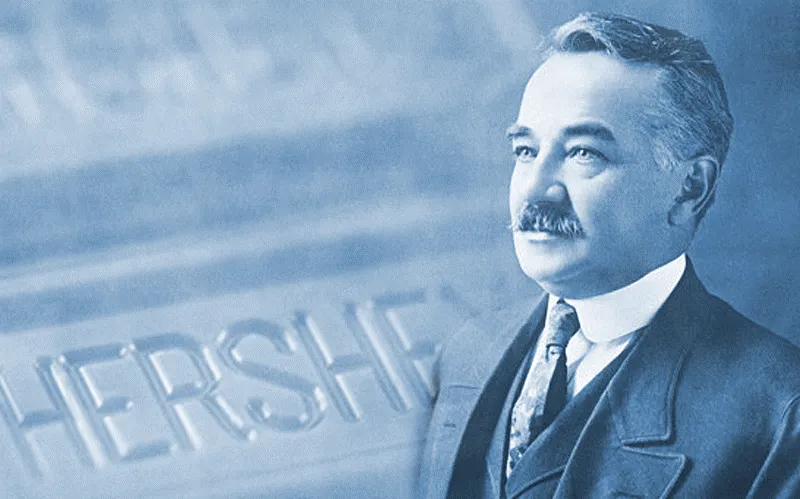
Milton Hershey’s story is a testament to resilience, vision, and the transformative power of purpose-driven leadership. His journey from failure to global success teaches us that the path to greatness is often paved with setbacks, but what defines a true entrepreneur is the ability to turn those setbacks into stepping stones.
Hershey’s relentless pursuit of innovation—whether it was perfecting milk chocolate production or building an entire town for his employees—proves that success isn’t just about making money. It’s about creating value, both for customers and for the people who make your dream possible. By focusing on quality, scalability, and affordability, Hershey disrupted the luxury chocolate market and made it accessible to everyone, showing us the power of democratising a product.
As entrepreneurs, we can also learn from Hershey’s forward-thinking leadership. His decision to sell his thriving caramel business to bet on chocolate exemplifies the importance of embracing calculated risks and staying ahead of market trends. Hershey’s investments in his employees’ well-being and education remind us that business isn’t just about profit—it’s about impact.
So, the next time you face a roadblock, remember Milton Hershey’s journey. Failures aren’t the end—they’re just the bitter layer before the sweet success. Like Hershey, stay resilient, keep innovating, and always dream big.
[ad_2]
Source link


